13 Nov Review: The LAOWA 100mm f/2.8 2:1 CA-Dreamer 2X Ultra-Macro Lens (2020 Updated version) gets you really close
A macro lens that has a variable range of magnification is one of the most practical pieces of gear to invest in.
Venus Optic has proven repeatedly that they are an innovative manufacturer in the ever-growing field of macro photography.
The updated version of their 100mm 2:1 macro lens is the best example that they also work on their existing range and fine tune and improve on it.
Note: This is the updated Version version of this lens from November 2020. It has more aperture blades but less aperture stops.
Scenario
As a macro photographer working in the field with live insects & spiders and often photographing above magnifications of 1:1 I have put a focus to test the lens´ abilities in these scenarios.
There are a lot of technical reviews available already, but for me it was interesting to see how the lens can or cannot keep up with my requirements when I photograph live specimens in difficult lighting situations.
If you are only interested in how it actually performs, you can skip the technical sections and jump to the section ‘Using the LAOWA 100mm 2:1 macro lens in the field’ directly.
The Lens
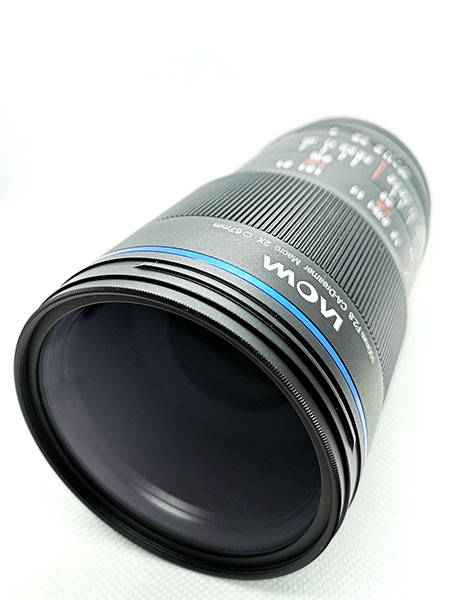


The specifications of this Macro lens almost sound too good to be true: up to 2:1 magnification, optimized for full frame and extra-low dispersion glass.
It can be used for classic macro work with low working distance but also for portraits.
The updated lens is also intended to be used for filming, benefiting from an improved bokeh due to more (13) aperture blades.
The Specifications
You will not find any chromatic aberration both in ‘in-focus’ and ‘out-of-focus’ areas thanks to the apochromatic ‘CA-Dreamer’ characteristic.
| Focal length | 100mm |
| Maximum Aperture | 2.8 |
| Minimum Aperture | 22 |
| Angle of View | 24.4° |
| Lens Structure | 12 elements in 10 groups |
| Aperture Blades | 13 |
| Min. Focusing Distance | 24,7cm |
| Max. Magnification | 2:1 |
| Filter Thread | 67mm |
| Dimensions | 72,4mm diameter x 134mm |
| Weight | 640g |
The Build
The lens feels very valuable and solid with its metal body and is beautifully designed – the blue LAOWA signature ring around the barrel adds the little aesthetic extra to make it special, like the red ring does for the Canon L-series.
Its design integrates perfectly into the range of available LAOWA lenses.
The focus and aperture rings move smoothly and are tactile enough to be accurate.
Using the LAOWA 100mm 2:1 macro lens in the field
The updated LAOWA 100mm 2:1 lens only has a manual aperture control but for true macro that is not a problem – though it can also be used for portraits and all kinds of shooting scenarios, being able to focus for infinity as well.
I personally would miss the auto-focus here, to be honest, while for macro work it is absolutely redundant.
Being able to change the aperture on the camera would of course speed up the working process. EXIF data is also not transmitted by the lens.
Note: The first version of this lens actually had a CPU chip for aperture control on the Canon EF mount.
A downside from the manual aperture control worth mentioning is, that the viewfinder will be considerably darker with a closed aperture and a good sight hence requires a lot of light or a focusing light as support.
Even at 1:1 the depth-of-field is paper-thin, just a few millimeters at higher apertures – using the lens at 2:1 will result in an even thinner DOF and often requires to focus stack to achieve an image that has a decent area of focus.
Most example photos are actually stacked images from up to 15 single photos.
With my setup the thin DOF was intensified from the full frame sensor of the Canon 5DII. Using a crop sensor camera will give you a bit more depth-of-field.
Let us move to the most important question: How did the lens perform?
From the solid build quality to the optical characteristics and its versatility by enabling the photographer to effortlessly change from 1:1 magnification to 2:1, the lens is definitely worth the money and I had a lot of fun using it so far.
Even for tiny specimens, like jumping spiders, the lens was a good tool. I rarely go above 3:1 for these spiders and the setup is good enough to crop in moderately, to make up for the bit of missing magnification.
What this lens benefits from the most, is using a focusing light and a diffused speedlite.
This way focusing is not a problem at all and you get that extra light, which you need for macro work.
Having worked a lot with the Canon Mpe-65 on a full frame camera, I know what a shallow DOF means. Controlling the LAOWA 100mm 2:1 does indeed feel very similar, especially at 2:1.
It is very difficult to get good shots from tiny insects or spiders from angles. This almost always requires to stack multiple shots. When shooting a specimen from a perfectly frontal angle it may be enough to get only one shot.
Working at 2:1 depends on a lot of variables, in particular the size of the subject, the angle, and its movement.
Let us take a look at some of the photos taken with the LAOWA 100mm 2:1.
Example Photos
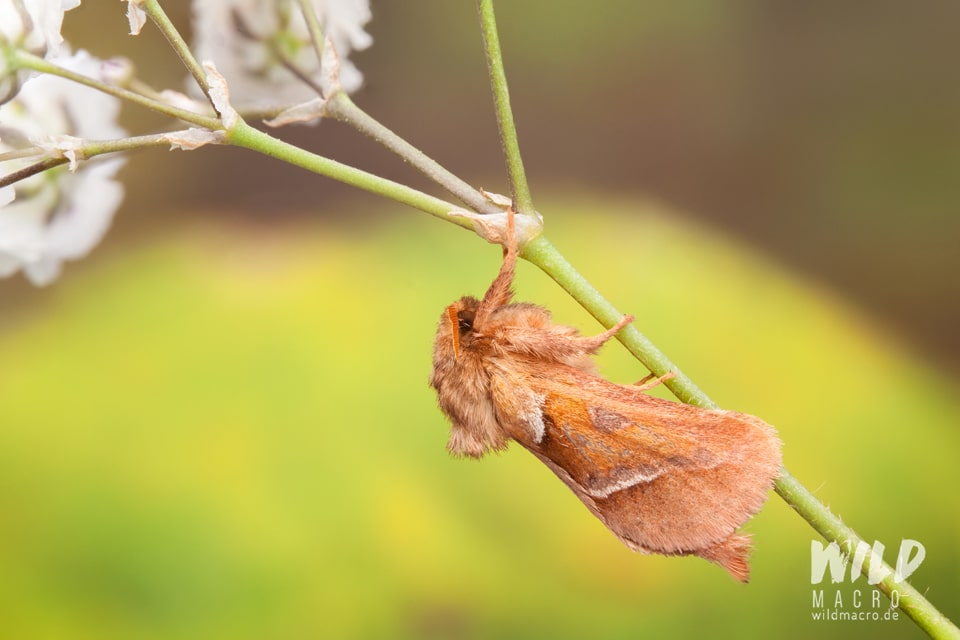
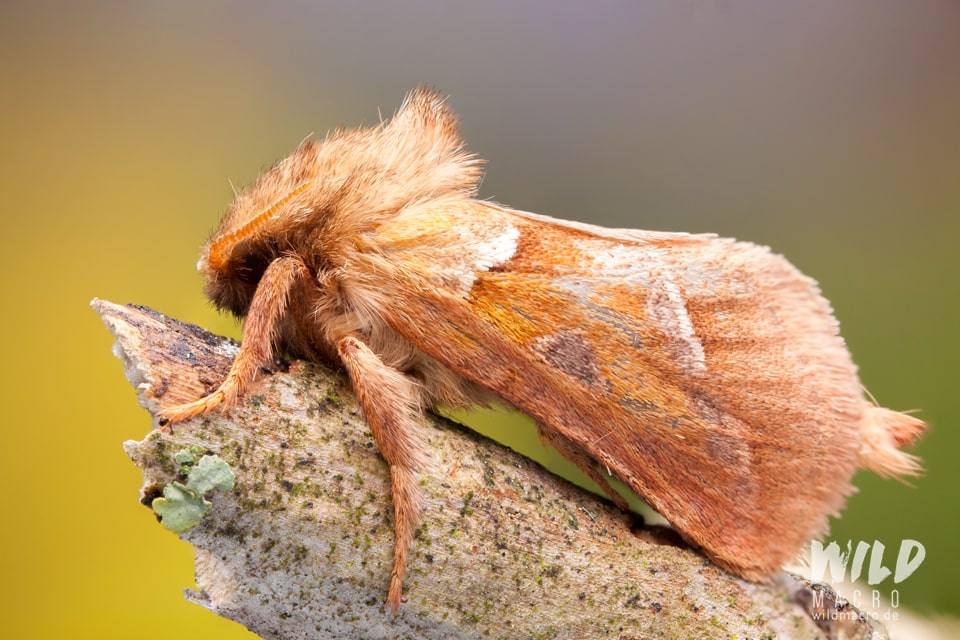
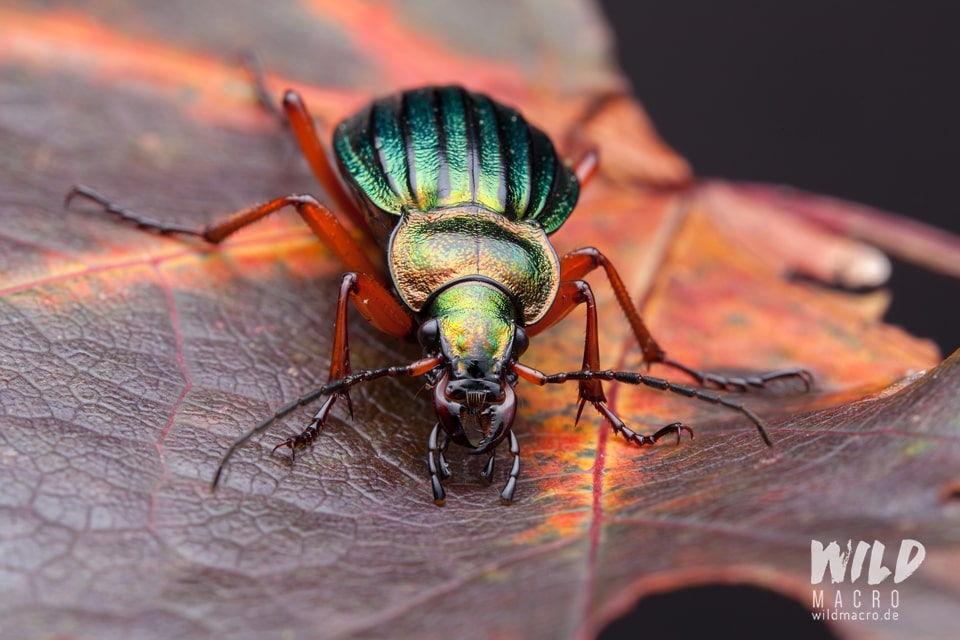
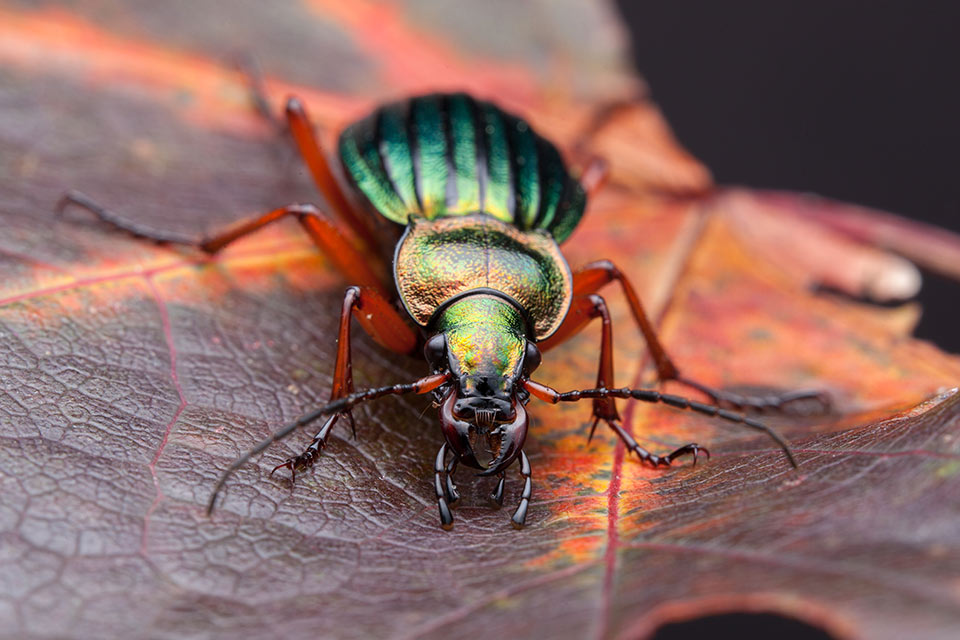
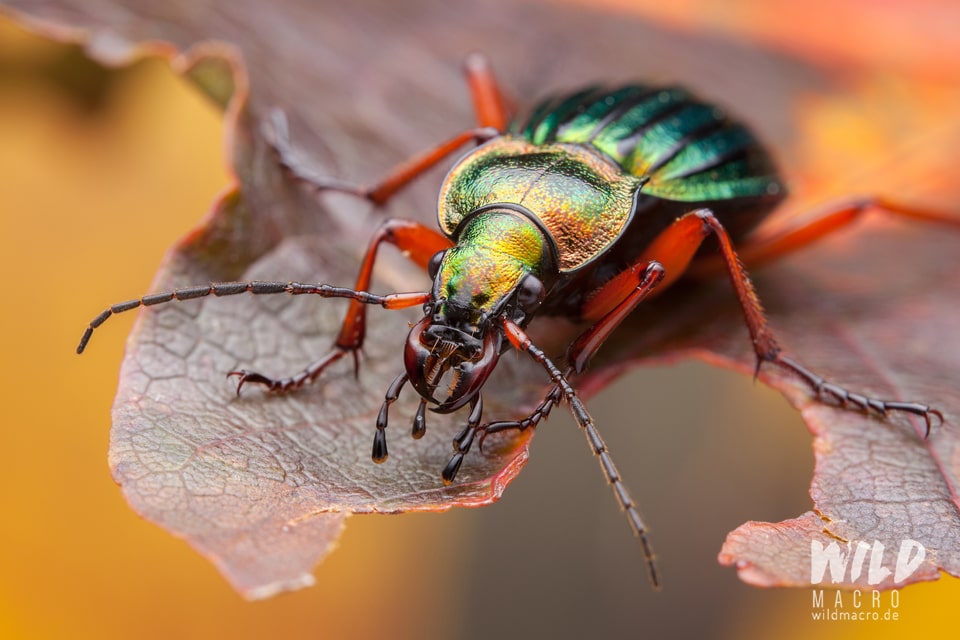
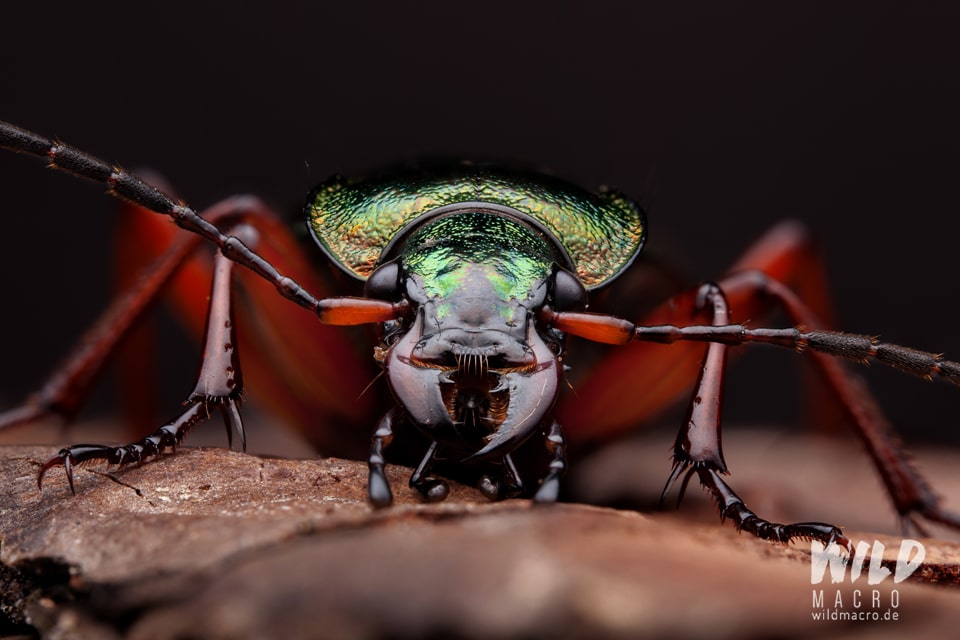

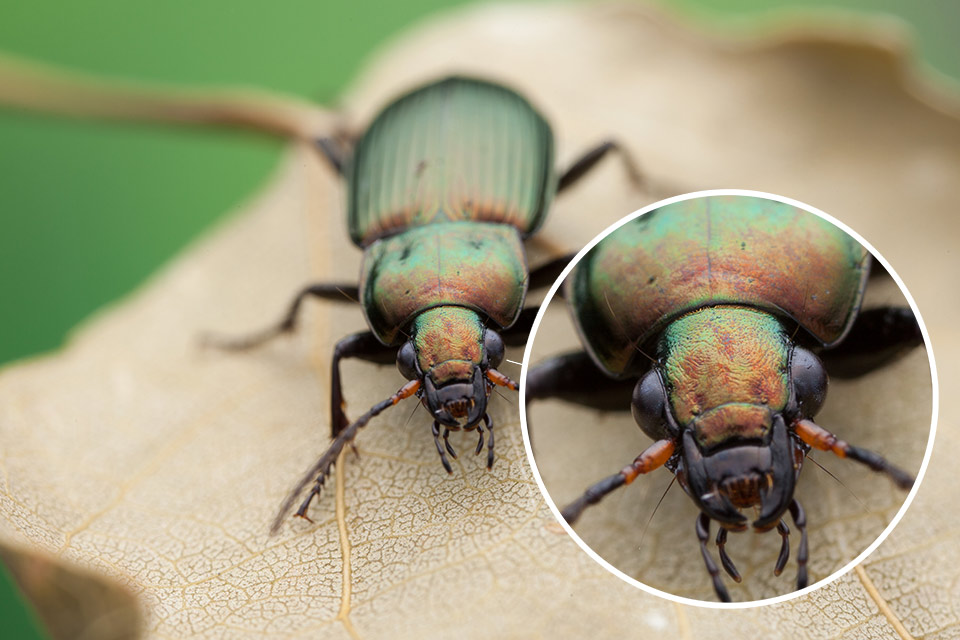
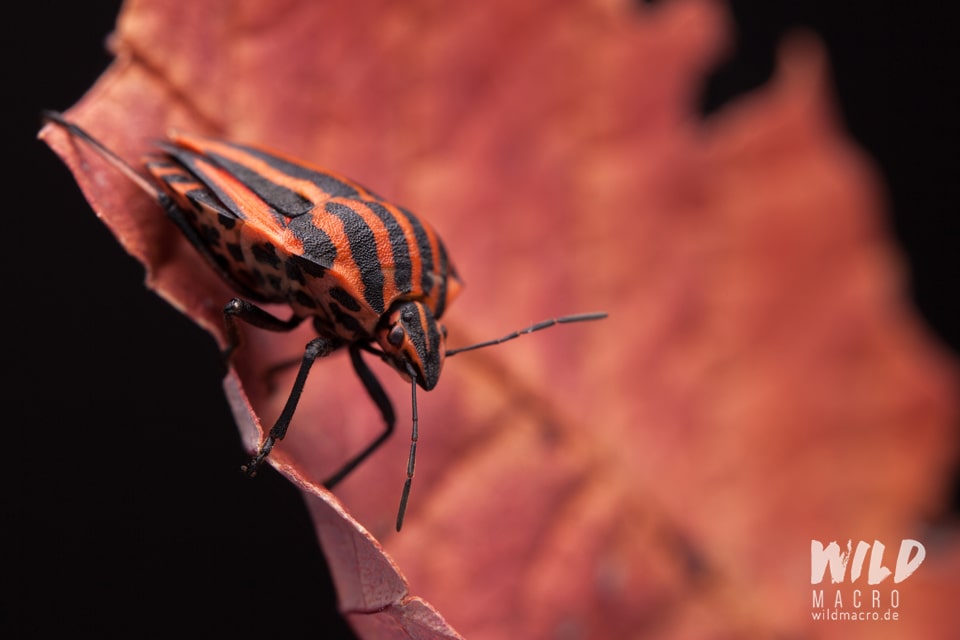
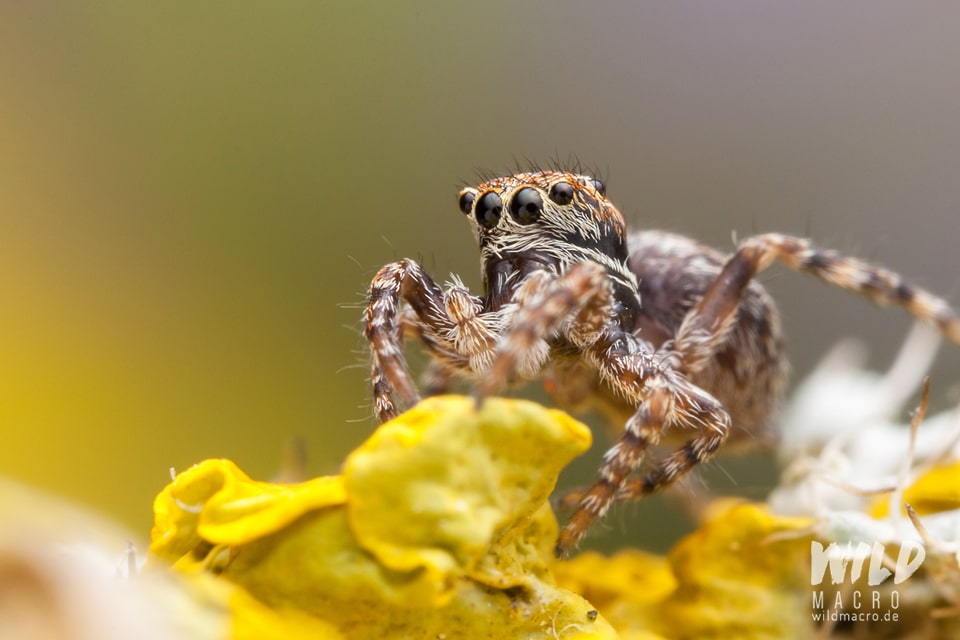
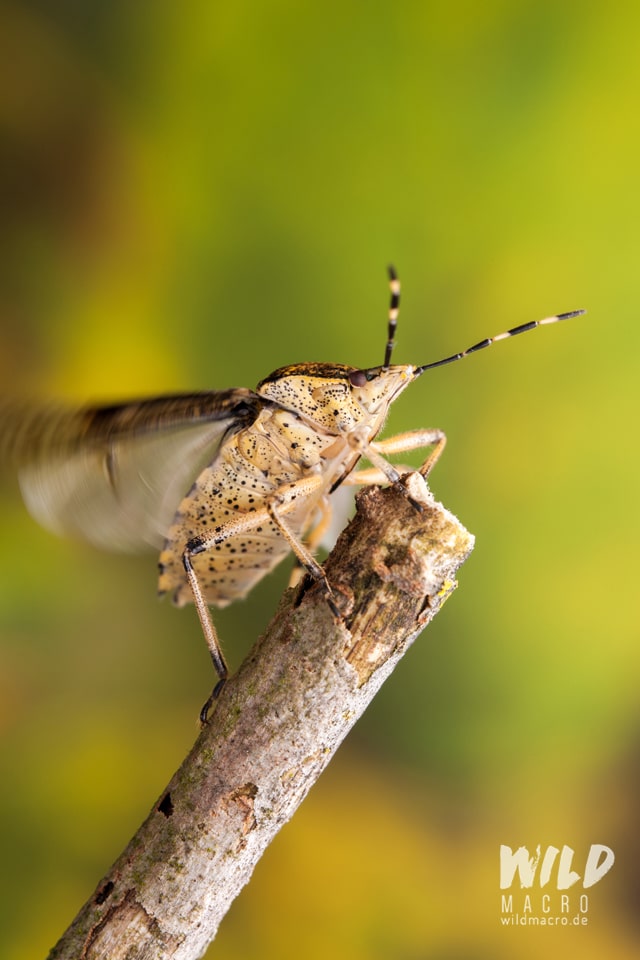
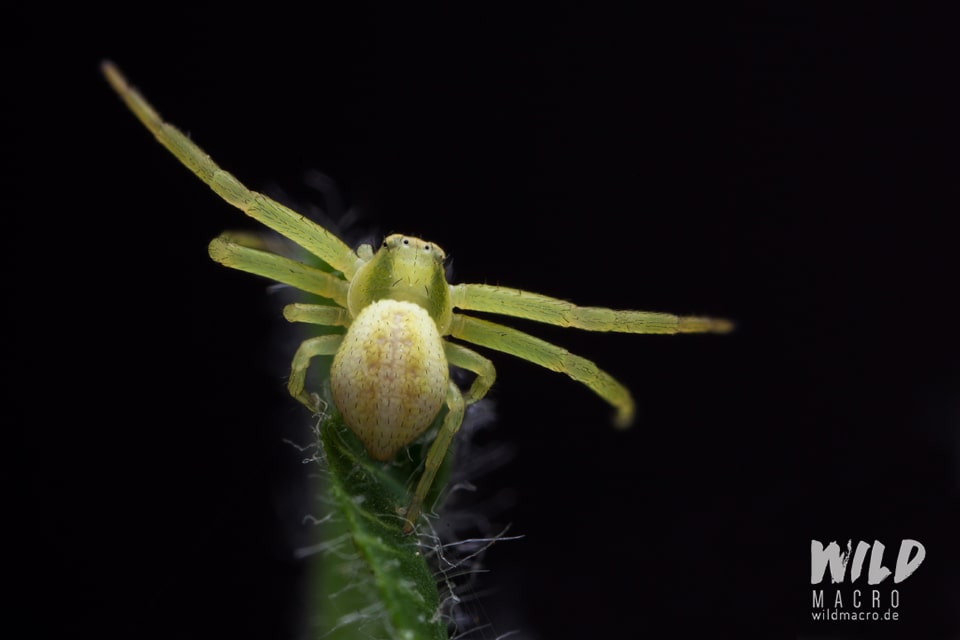
Pros:
- 2:1 magnification (no need for extension tubes or reverse rings)
- The lens is tack sharp and produces crystal clear images
- nice and contrasty rendering of values and colours
- The lens does not extend when changing the magnification
- minimal to no chromatic aberration
- reasonable price
Cons:
- Due to the construction using a UV filter to prevent dust from entering the barrel is advised
- Shallow depth-of-field (but this is normal for true macro lenses)
- No aperture control
- purely manual lens – no auto-focus (redundant for macro but sorely missed for portrait work)
- no EXIF data transmitted
Conclusion
The LAOWA 100mm 2:1 is a specialist lens: if you master it and know how to control it, it is a mighty tool that will produce tack sharp images with nice contrast and open up a window to the macro world of 2:1 magnification.
A beginner will also be happy with it since it starts at 1:1, but the learning curve will be steep if there are no earlier experiences with true macro and a fully manual lens.
The biggest drawbacks may be the lack of an aperture control via camera and auto-focus, especially if you plan on using the lens for portrait.
But IF you are explicitly looking for a macro lens with a magnification higher than 1:1, then this lens is definitely a good addition to the camera bag.
The lens is tack sharp, built solidly and will not disappoint you with its optical abilities.
If you already own a 100mm 1:1 macro lens I would sell and switch it with the Laowa.
It is always good to have more versatility to adapt to changing situations.
While 1:1 might be more than close enough for a bigger insect, it might be a completely different story if you want to photograph a tiny spider for example.
Here the 2:1 magnification will make you happier – believe me.
More technical info on the LAOWA 100mm f/2.8 2:1 macro lens can be found on LAOWA´s official website.
The Lens can be ordered here.



No Comments